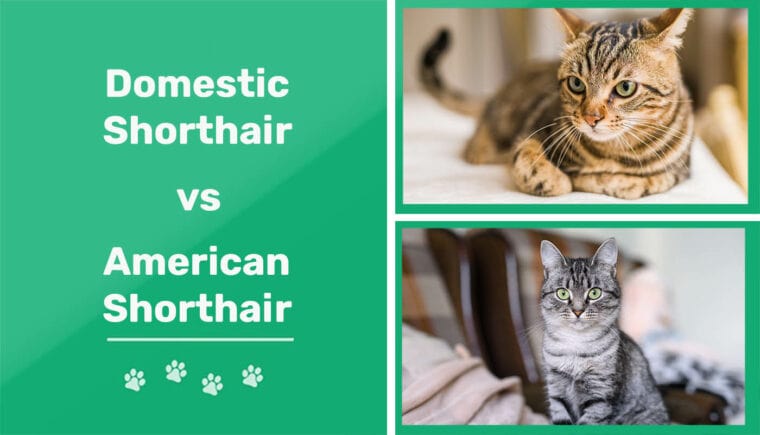
Click to Skip Ahead
Adopting a cat is an exciting time, but choosing which kitty to bring home can leave you feeling conflicted. While some cats may look the same, each cat is unique, and you can never be sure about what you are going to get. However, by learning about a certain breed, you can get an idea about the cat’s characteristics and traits.
In this article, we will look at two very similar and popular breeds: the Domestic Shorthair and the American Shorthair. While they are from the same family and share many of the same traits, some differences still set them apart. Either of these felines will make an excellent companion, but we’ll examine their differences to help you choose the most suitable fur baby for your family.
Visual Differences
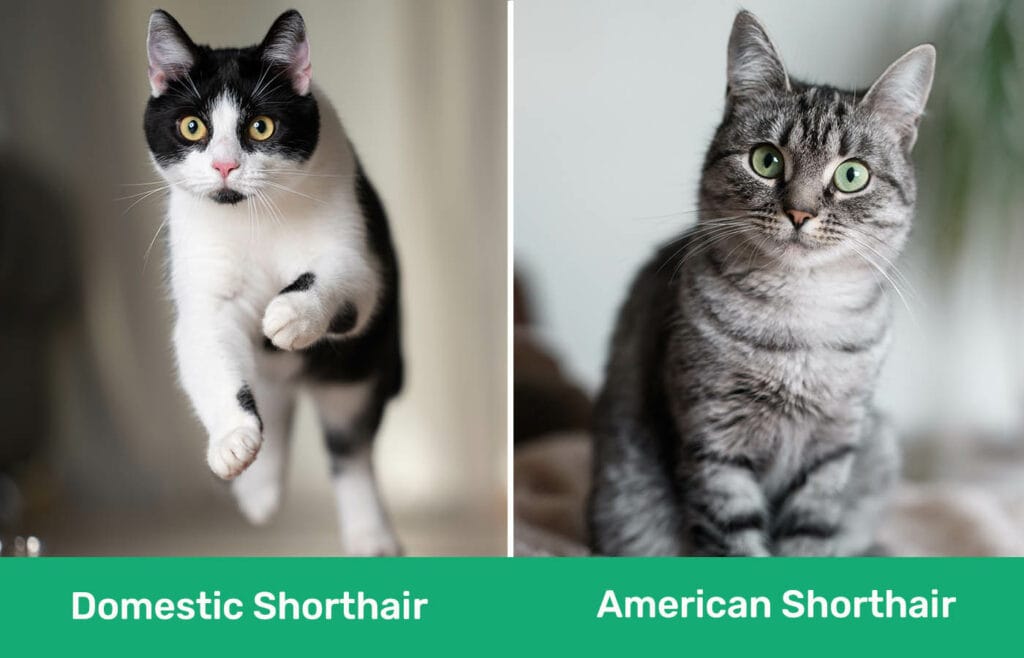
At a Glance
Domestic Shorthair Overview
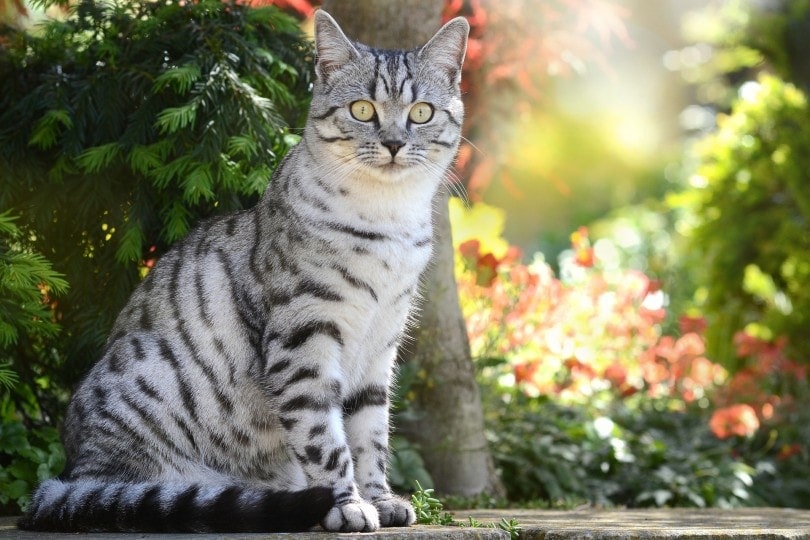
The Domestic Shorthair is not a specific breed but was developed from a mix of other breeds. Animal Planet refers to them as the mutts of the cat kingdom because they are the feline equivalent of a mixed-breed dog.1 Domestic Shorthair cats vary in colors, markings, and temperaments.
Due to their dedication and impeccable ability to catch rats, Domestic Shorthair cats were regarded as working cats in North America’s early days of colonization. These cats became pets by the symbiotic exchange of inexpensive labor for food and love.
The Cat Fanciers’ Association (CFA) accepts the Domestic Shorthair in the Household Pets category even though it is not a pedigreed cat. Regardless of their genetic makeup, the Domestic Shorthair is an excellent pet if you’re searching for a loving, outgoing cat to share your life with.
Personality / Character
The Domestic Shorthair is classed as a working cat because of their excellent hunting instincts, superb endurance, and admirable jumping and balancing skills. These skills also translate into their playful character. However, the personality of each Domestic Shorthair is unique because of their lineage of many breeds. They can certainly be playful but can also be shy.
Some may be more affectionate than others, while some may be more aloof. The best way to determine the personality of your new cat is to spend time with them. After a short while, you will learn a lot about their playfulness, affection, energy, and other traits.
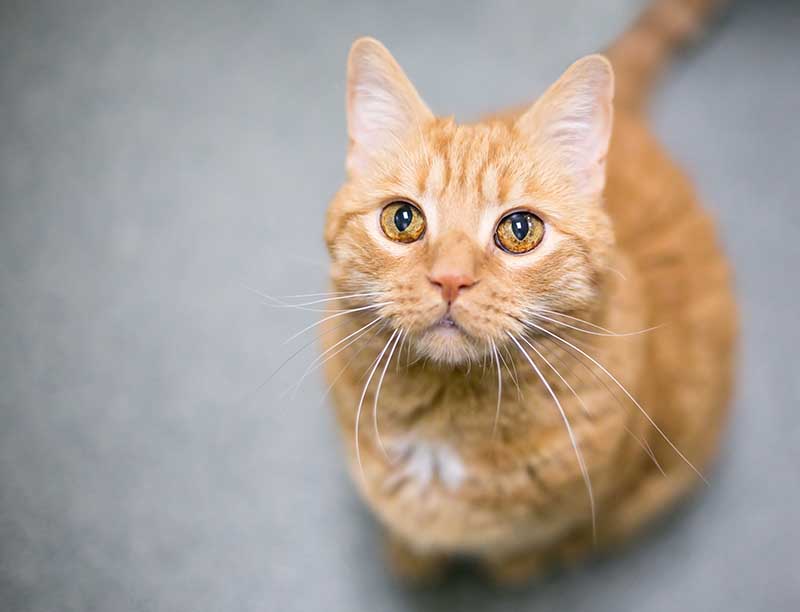
Appearance
The Domestic Shorthair comes in several colors, patterns, and sizes, but they typically have a strong, medium-sized build. Their faces are round with big, bright eyes, and their coats are short and sleek.
Their coats can range in color from black, brown, white, orange, red, and a combination of two or more. Their coat and color patterns can also be solid, bicolor, tricolor, tabby, or tortoiseshell. You are truly spoiled for choice when it comes to choosing a Domestic Shorthair.
Health & Care
Domestic Shorthairs have a long lifespan of 10–20 years. They are generally healthy due to their wide genetic variety but have a few potential health concerns to be aware of.
The most common cause of skin issues in Domestic Shorthair cats is allergies, which can cause redness, scratching, excessive licking of the feet or face, and hair loss. Food, parasites, pollen, or dust can cause allergies. Another issue is obesity. Domestic Shorthairs love food, so they are prone to pick up weight quickly, which can lead to further health issues such as diabetes.
You can talk to your veterinarian about the ideal diet for your cat’s needs and ensure your cat gets plenty of exercise. Ensure your cat is checked routinely by a veterinarian at least once a year, and ensure you provide your cat with vet-approved tick and flea preventives and vaccinations.
All cats should have dental cleanings to lower their risk of periodontal disease. You can also use dental treats, brush your cat’s teeth, or add a supplement to their water to maintain their dental health between veterinary visits.
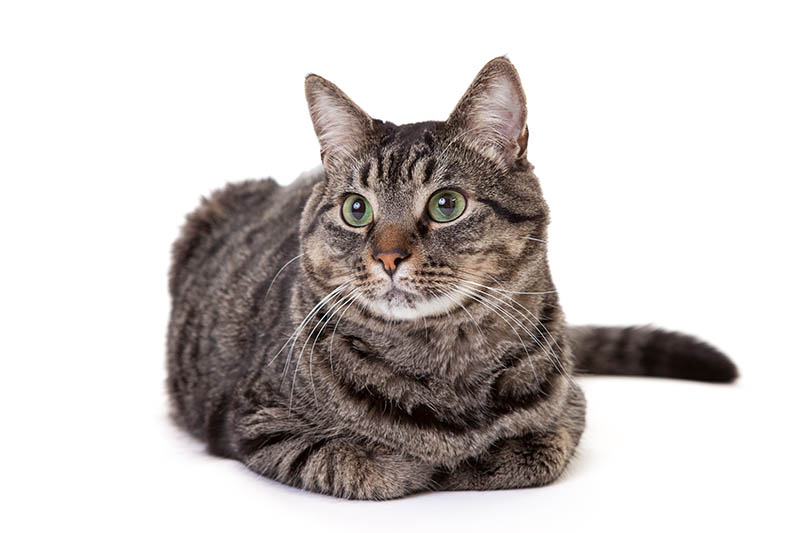
Breeding
It’s not hard to find a Domestic Shorthair, and there are plenty of kittens and older cats that would love to come home with you. A quick Google search will give you many options, but it is important to ensure that the breeder is reputable. Try to meet the kitten before making a choice, preferably at the breeder’s home, where you can assess the environment and health of the parents.
Adopting from a rescue or shelter is a highly recommended alternative. So many cats and kittens need a loving home, and your perfect companion may just be waiting for you at your local shelter.
Suitable For:
While the personality and appearance of Domestic Shorthairs can vary, there are certainly a few out there that will suit your family. Any family looking to adopt a Domestic Shorthair must provide them with a quality diet and a safe and enriching environment. They need space to run, places to climb, and something to scratch to satisfy their natural behaviors. Toys, perches, and scratch pads are all essential, and when it’s time to go to bed, they will likely curl up in your lap or at your feet.
American Shorthair Overview
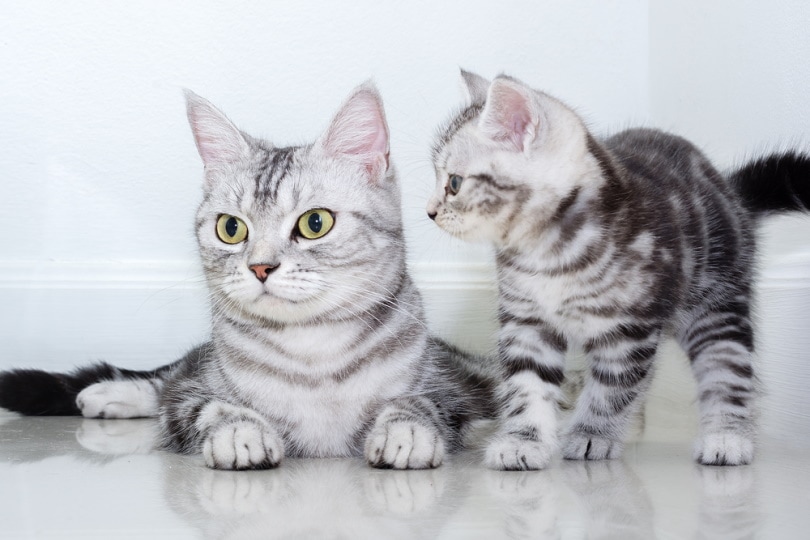
As their name would suggest, the American Shorthair is an American breed. While they’re different from the Domestic Shorthair, they likely descended from the Domestic Shorthair and other European breeds. The American Shorthair is one of the most popular breeds native to America. They were first documented in the early 1900s but became the fifth recognized breed of the Cat Fanciers Association in 1906.
The American Shorthair was developed to serve as a barn cat to keep farms free of rodents and is a popular feline companion in many homes today.
Personality / Character
The American Shorthair cat makes a wonderful companion. They are calm, laid-back, and devoted cats that are loyal to every member of the household. Unlike other cats, the American Shorthair doesn’t cry for attention and generally has an even temperament. They enjoy playing but don’t require constant attention since they also like to spend time alone. They are easy to train and typically get along with children and other pets.
Appearance
The American Shorthair is a medium to large breed cat with a muscular form. Their chest is broad, and they have strong, thick legs. They also come in various colors and patterns, but their most striking pattern is silver with black markings. Other coat colors include white, black, cream, brown, cameo, blue, and red, with patterns that include solid color, bicolor, tricolor or calico, tabby, and tortoiseshell. They have striking eyes that can be green, gold, copper, hazel, or blue.
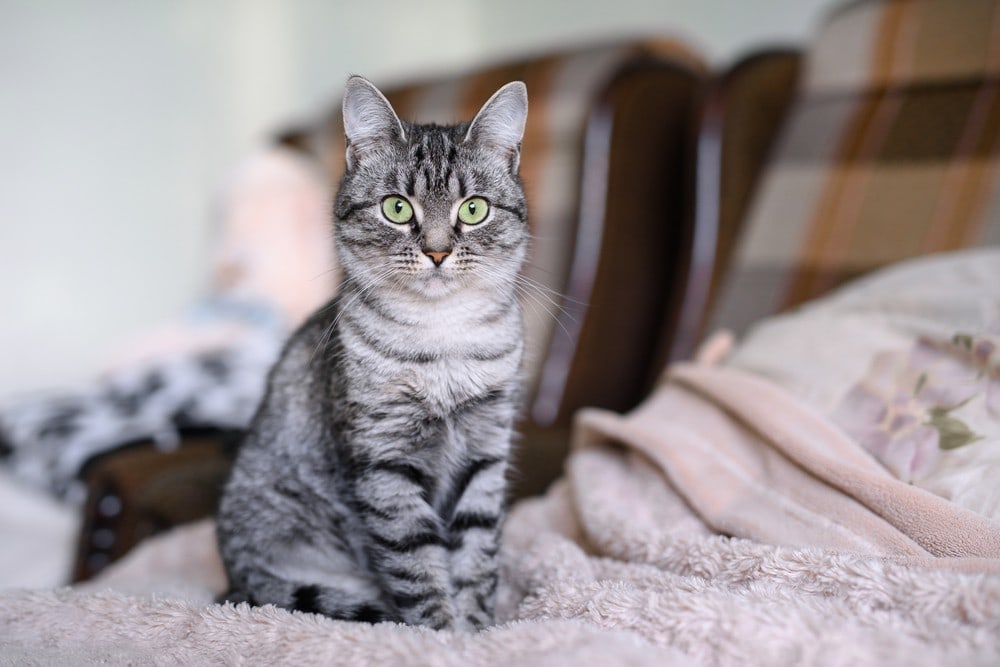
Health & Care
The American Shorthair has an average lifespan of about 15–20 years. They are generally one of the healthiest purebred cats around but are prone to a few health issues, such as polycystic kidney disease, hyperthyroidism, and hypertrophic cardiomyopathy.
It is important to feed them a high-quality, well-balanced diet and provide a safe environment, yearly veterinary check-ups, vaccinations, and flea and tick preventatives. Like the Domestic Shorthair, they need regular dental cleanings, and you should be sure not to overfeed them since they could be at risk for obesity.
Breeding
Finding an American Shorthair is likely just as easy as finding a Domestic Shorthair since they are very popular. You can easily find a reputable breeder, but it’s vital to meet the kitten’s parents and ask questions about the breeding practices to ensure your cat is healthy.
Finding an American Shorthair at a shelter or rescue is also very likely. While they may be older, there is still a good possibility that you may find a kitten, and at any age, they will be grateful to come home with you.
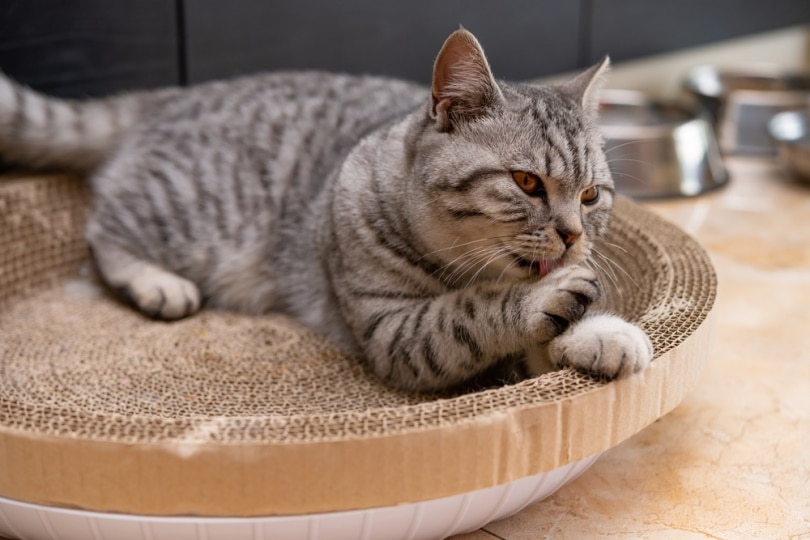
Suitable For:
The American Shorthair is widely popular, and one of the reasons is that they easily fit in with most families. They are friendly pets that will be happy living in many types of homes, whether it’s a large farm property or a third-floor apartment building.
They need a family who will provide a healthy diet, an enriched environment, and lots of love. Like most cats, they are not too demanding but will love the attention they get from their humans. They generally enjoy playing with children, and if raised with other pets, they can get along and become friends.
If you are looking for a low-maintenance cat that can be independent and affectionate, the American Shorthair may be the breed for you.
Which Breed Is Right for You?
Domestic Shorthairs and American Shorthairs are from the same family but have some differences that set them apart, which may help determine which is right for you. The American Shorthair can be slightly larger, but the Domestic Shorthair has a larger variety of colors and patterns.
They are both healthy and hardy breeds, but the American Shorthair may be prone to a few more health issues. When choosing which breed is right for you, you must consider how each cat will fit into your lifestyle and which characteristics and traits you prefer. This will differ for every cat owner, so the choice is yours!
While the Domestic Shorthair and the American Shorthair share many similarities, we hope this breakdown has helped you get to know each breed a little better to help you choose which one is more suitable for your family. One certainty we can share with you is that no matter which breed you choose, you will have many years of affection, entertainment, companionship, and joy!
Featured Image Credit: (T) Krakenimages.com | (B) Lalandrew, Shutterstock







